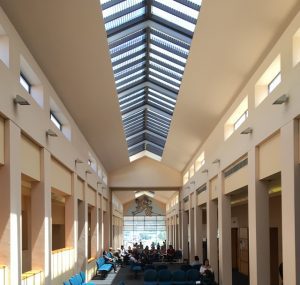
The courts in Macarthur are full to overflowing and unless something is done it will get much worse as the population grows in the next 20 years, has warned the president of the NSW Law Society Doug Humphreys.
“The justice facilities in Macarthur are overloaded and this is causing unmanageable delays and costs for residents,’’ he said.
“Macarthur is serviced by three court complexes at Campbelltown, Camden and Picton, all of which are clogged with matters,’’ he said.
Mr Humphreys said Campbelltown Local Court had reached capacity, with four magistrates courts and three district courts running at any one time.
The restricted sitting hours and inadequate security facilities at Camden and Picton Local Courts meant these courts cannot help address a backlog in criminal and civil cases.
Picton Local Court sits for nine days a month – with some sitting days extending well into the evening. Camden Local Court sits for two days a month for domestic violence and apprehended violence order matters.
Neither Camden nor Picton courts have a permanent police presence near the court or adequate security checkpoints.
“When it comes to family disputes, residents and court users travel long distances to Wollongong, Parramatta or Sydney to access justice as there is no Federal Circuit Court in the region,’’ Mt Humphreys said.
“This adds significant stress and cost to families.’’
Mr Humphreys was speaking after last week’s Macarthur Access to Justice Forum in Campbelltown, hosted jointly by the Law Society of NSW and the Macarthur Law Society.

Dozens of concerned residents, legal practitioners and representatives from community organisations gathered to discuss the critical infrastructure needs of the region for the future administration of justice.
It was agreed that the only way to address the urgent need for court resources was to establish a new multi-jurisdiction justice precinct in Macarthur.
This is a project now vigorously being advocated by the Law Society of NSW and the Macarthur Law Society.
The population of the Macarthur region is about 300,000, but it is expected to double to more than 600,000 people by 2036.
“If the court infrastructure and legal services are unable to cope with current demand, how will they cope when the population grows,’’ Mr Humphreys said.
